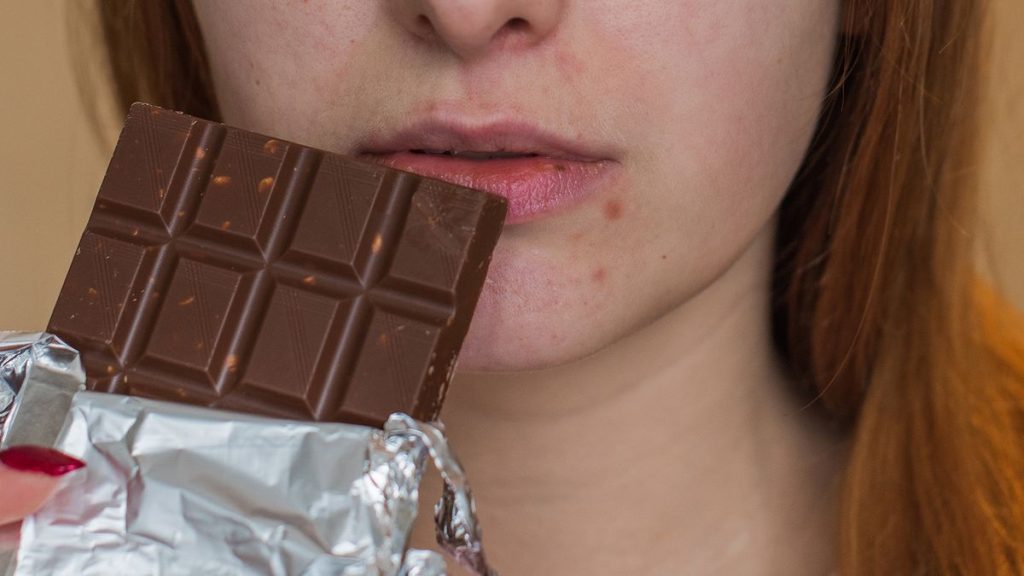If you deal with constant breakouts of pimples, you might be tempted to eliminate sugar from your diet. After all, that’s the advice offered by various online sources, and numerous studies seem to back it up. But the bittersweet truth is that cutting out sugar likely won’t be enough to solve your pimple problem.
This raises a question: Does eating sugar actually cause acne? Because of the interplay between many factors involved in acne, pointing to sweet treats as the sole culprit may be an oversimplified explanation, experts told Live Science.
Acne results from complex interactions among hormone levels, oil glands, clumping skin cells and the skin microbiome, the community of microorganisms on the skin, combined with lifestyle factors like stress and diet, said Dr. Anjali Mahto, a consultant dermatologist and spokesperson for the British Association of Dermatologists.
Due to this ensemble of factors, “dietary changes alone are generally not recommended as the only treatment for patients with acne,” Dr. Tanya Greywal, a dermatologist and instructor at the University of Washington, told Live Science in an email. “Many times topical or oral medications are also necessary.”
Related: Does dairy cause acne?
Nutritional studies have found a link between sugar intake and acne. Studies from China, France and Turkey tracked participants’ diets and spotted correlations between the two. However, those observational studies don’t prove that sugar causes acne; other shared factors may underlie the results.
In a randomized, controlled trial in South Korea, participants with acne who were placed on a reduced-carb, low-glycemic diet experienced slight improvements in their acne compared with participants on carb-heavy diets.
However, it’s hard to draw definitive conclusions because many acne studies have experimental design flaws that make their results difficult to interpret. For example, participants self-diagnosed with acne may have visually similar, yet distinct skin conditions, like folliculitis. Therefore, studies may include people who don’t actually have acne.
In observational studies that explore correlations between diet and acne, participants typically complete surveys about their meals. However, people are “not very good at recording exactly what they’ve had or the amounts,” Mahto told Live Science. Surveys also tend to be taken at a few points in time and, therefore, largely ignore how dietary patterns vary over long periods. To complicate things, sugary foods also often contain other ingredients that possibly influence acne, such as dairy or cocoa.
In theory, high-glycemic foods could potentially contribute to acne by spiking blood sugar levels and thus an insulin response. (Image credit: Anouk de Maar via Getty Images)
These limitations raise doubts about the link between sugar and acne. Nevertheless, dieting is a common strategy for managing the condition because “people like to try and control the things that they can,” Mahto noted.
Other acne triggers are often unaccounted for in nutritional studies and less easily controlled. For example, a buildup of the stress hormone cortisol can worsen acne, or people may have underlying conditions that provoke acne, such as polycystic ovary syndrome (PCOS), a condition involving insulin resistance and excessive synthesis of male hormones by the ovaries.
Surges in male hormones, like testosterone and its byproduct dihydrotestosterone are the primary triggers for acne in both sexes. High male hormone levels in the skin cause oil-producing glands to churn out more of a moisturizing substance called sebum. Pimples appear when hair follicle pores become clogged with an excess of this oily amalgam. Under these conditions, skin cells become sticky and clump together, adding to the clog. This creates a supportive environment for bacteria, mainly Cutibacterium acnes, some strains of which provoke inflammation, giving zits their signature red, swollen appearance.
Foods that trigger a sudden uptick in blood sugar levels could theoretically boost the production of these acne-causing hormones. High-glycemic foods, like white bread, contain little fiber and release sugar into the blood rapidly, triggering an insulin response. This fuels a spike in insulin growth factor-1, a hormone that promotes male hormone production. Meanwhile, high-fiber foods, like most fruits, are considered low on the and release sugar into the bloodstream gradually without triggering an insulin response.
Related: Which fruits are good for diabetics?
Following this theory, sugar may be less likely to trigger acne if it’s consumed with fiber. However, although insulin surges can set off acne-triggering hormonal changes, the confounding factors that creep into studies muddy our understanding of how strongly sugar drives breakouts. Overindulging on sugary treats probably does contribute to acne, but it’s difficult to weigh its effect against other triggers.
In an effort to treat their acne, people often self-manage their diet in lieu of consulting a dermatologist, and by cutting out sugar and other foods alleged to provoke acne, they could develop worryingly restrictive eating behaviors. And although “eating well for your skin is the same as eating well for every other organ of your body,” Mahto said, obsessing over what you eat probably won’t cure your acne.
This article is for informational purposes only and is not meant to offer medical advice.

